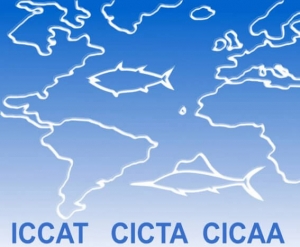Marlin Reduction Proposal at ICCAT

Very late in the year and not anticipated, landing limits for Atlantic marlin were raised in the international arena. It was the overfished status of Atlantic billfish that became the subject of an international negotiating proposal put forth by the European Community (EC) at the annual negotiations of the International Commission for the Conservation of Atlantic Tunas (ICCAT). The EC’s proposal called for further reductions in Atlantic blue marlin landing quota from 2000 metric tons to 1,750 metric tons, a positive for that harvesting level would give marlin a 50% probability of recovering by 2028. The reduction is essential for recovery of the stock.
But the EC proposal also called for a reduction in the Atlantic marlin allocation for U.S. anglers from 250 to 220 marlin. To date, U.S. anglers have not landed 250 Atlantic marlin in a year, so 30 marlin is not pivotal in whether recreational fishing opportunities would remain, but it is pivotal in terms of fair play and equity.
In sharp contrast to the U.S. 250 Atlantic marlin recreational fishing allocation is the reported commercial landings of Atlantic blue marlin. In 2009, 2,868 metric tons or 6,322,858 pounds of Atlantic blue marlin were reported as landed by international commercial vessels. In 2011, the authorized landing allocation was reduced to 2,000 metric tons or 4,409,245 pounds, which was a positive step forward, but it still equates to 11,023 individual marlin if we assume a 400-pound average weight! The commercially landed Atlantic blue marlin, in excess of 11,023 fish in one year, greatly exceeds the minuscule 250 Atlantic marlin (blue marlin and white marlin collectively) allocated to the U.S. recreational fishing community.
The billfishing community generates strong, positive economic returns to the U.S. with most of the caught Atlantic blue marlin released, allowing them to remain part of the reproducing stock. At the same time, international fleets fishing for Atlantic marlin are landing approximately 11,000 marlin.
Rampant underreporting, failure to report, significant jumps in one year (some in the hundreds of metric tons and in one case thousands of metric tons), not previously reported, but claimed to justify metric ton increases in allocation are all too common in international commercial fisheries of ICCAT nations. The gross lost tonnage from inaccurate reporting or no reporting from commercial fleets and artisanal fishers dwarfs the U.S. annual recreational fishing allocation of 250 marlin. While this proposal ultimately failed, a call for the U.S. billfishing community to reduce its allocation by 30 fish is insulting, even when U.S. anglers have not landed 250 Atlantic marlin in one year. Only when other nations individually reduce their Atlantic marlin landings significantly, perhaps then it might be appropriate for ICCAT to ask the U.S. for a 30 fish reduction in its allocation.






